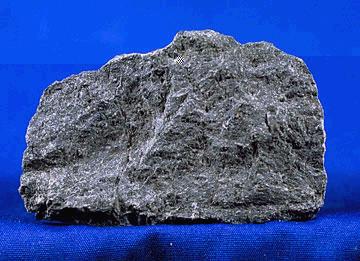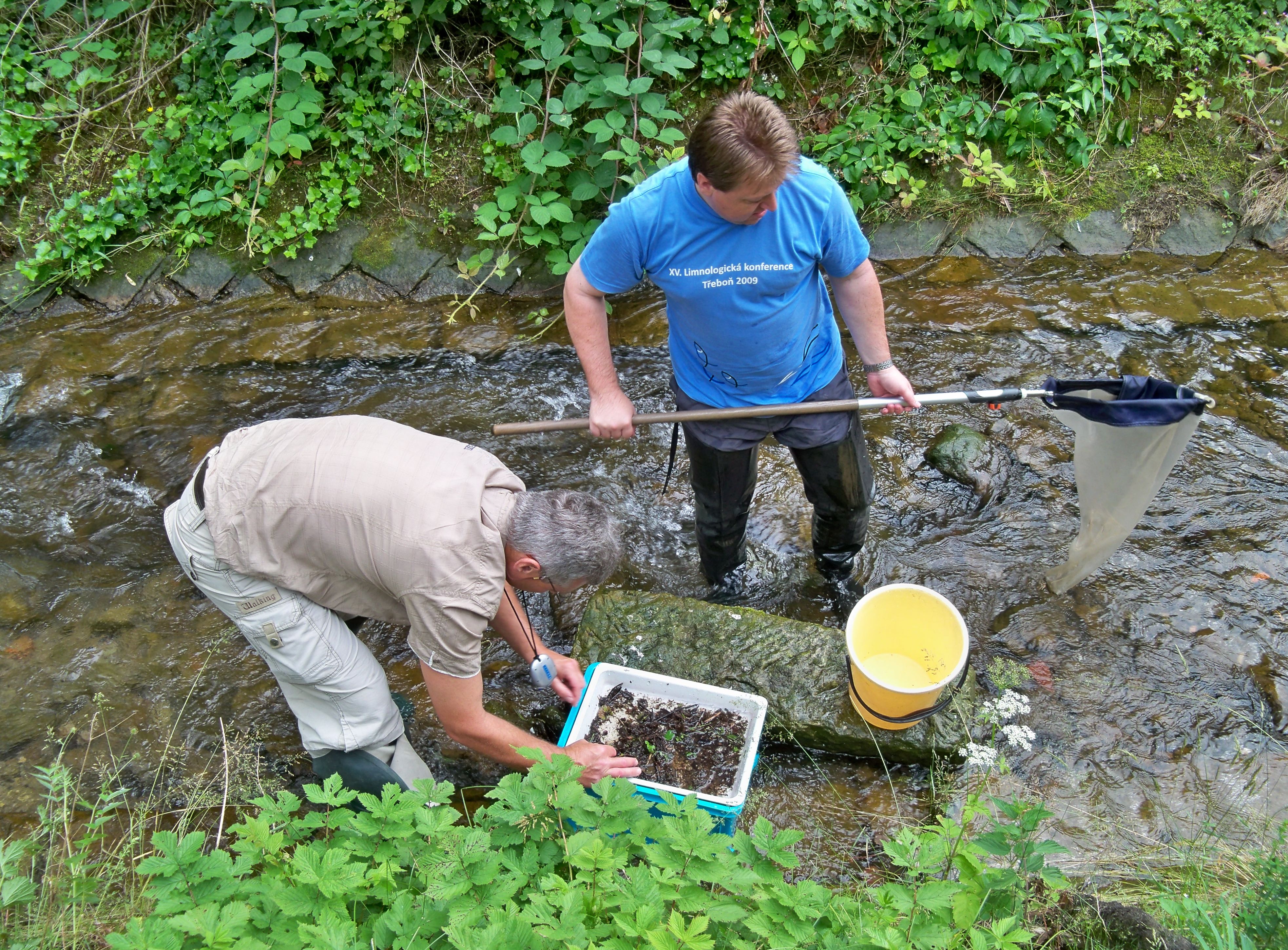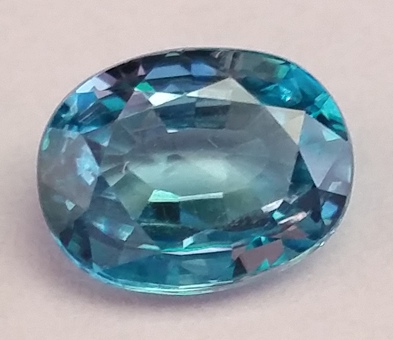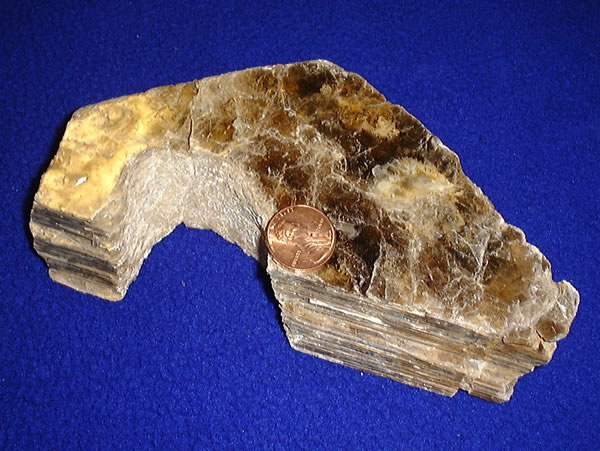|
Mafic Rocks
A mafic mineral or rock is a silicate mineral or igneous rock rich in magnesium and iron. Most mafic minerals are dark in color, and common rock-forming mafic minerals include olivine, pyroxene, amphibole, and biotite. Common mafic rocks include basalt, diabase and gabbro. Mafic rocks often also contain calcium-rich varieties of plagioclase feldspar. Mafic materials can also be described as ferromagnesian. History The term ''mafic'' is a portmanteau of "magnesium" and "ferric" and was coined by Charles Whitman Cross, Joseph P. Iddings, Louis V. Pirsson, and Henry Stephens Washington in 1912. Cross' group had previously divided the major rock-forming minerals found in igneous rocks into ''salic'' minerals, such as quartz, feldspars, or feldspathoids, and ''femic'' minerals, such as olivine and pyroxene. However, micas and aluminium-rich amphiboles were excluded, while some calcium minerals containing little iron or magnesium, such as wollastonite or apatite, were included in the ... [...More Info...] [...Related Items...] OR: [Wikipedia] [Google] [Baidu] |
Louis V
Louis V may refer to: * Louis V of France (967–987) * Louis IV, Holy Roman Emperor and V of Germany (1282–1347) * Louis V, Duke of Bavaria (1315–1361) * Louis V, Elector Palatine (ruled 1508–1544) * Louis V, Landgrave of Hesse-Darmstadt (ruled 1596–1626) * Louis Joseph, Prince of Condé (1736–1818) * Louis Vuitton Louis Vuitton Malletier SAS, commonly known as Louis Vuitton (, ), is a French Luxury goods, luxury fashion house and company founded in 1854 by Louis Vuitton (designer), Louis Vuitton. The label's LV monogram appears on most of its products, ..., luxury goods and fashion company, also its eponymous founder {{disambiguation Human name disambiguation pages ... [...More Info...] [...Related Items...] OR: [Wikipedia] [Google] [Baidu] |
Color Index (geology)
Color index, as a geological term, is a measure of the ratio between generally dark mafic minerals and generally light felsic minerals in an igneous rock. The color index of an igneous rock is the volume percentage of mafic minerals in the rock, excluding minerals generally regarded as "colorless" such as apatite, muscovite, primary carbonates and similar minerals. Rocks can be sorted into classes by several systems based on their color index, including into leucocratic and melanocratic rocks, or into (mineralogically) felsic and mafic rocks. With an accuracy within 1%, color index can be determined by applying a microscope to a flat, planar section of rock and employing a point counting technique to determine the amount of light or dark rock. In the field, it can be generally estimated visually from hand specimens. The most common light-colored (felsic) minerals are the feldspars, feldspathoids, and silica or quartz. Common dark-colored (mafic) minerals include olivine, p ... [...More Info...] [...Related Items...] OR: [Wikipedia] [Google] [Baidu] |
Field Work
Field research, field studies, or fieldwork is the empirical research, collection of raw data outside a laboratory, library, or workplace setting. The approaches and methods used in field research vary across branches of science, disciplines. For example, biologists who conduct field research may simply observe animals ecology, interacting with their Natural environment, environments, whereas social scientists conducting field research may interview or observe people in their natural environments to learn their languages, folklore, and social structures. Field research involves a range of well-defined, although variable, methods: informal interviews, direct observation, participation in the life of the group, collective discussions, analyses of personal documents produced within the group, self-analysis, results from activities undertaken off- or on-line, and life-histories. Although the method generally is characterized as qualitative research, it may (and often does) include ... [...More Info...] [...Related Items...] OR: [Wikipedia] [Google] [Baidu] |
Zircon
Zircon () is a mineral belonging to the group of nesosilicates and is a source of the metal zirconium. Its chemical name is zirconium(IV) silicate, and its corresponding chemical formula is Zr SiO4. An empirical formula showing some of the range of substitution in zircon is (Zr1–y, REEy)(SiO4)1–x(OH)4x–y. Zircon precipitates from silicate melts and has relatively high concentrations of high field strength incompatible elements. For example, hafnium is almost always present in quantities ranging from 1 to 4%. The crystal structure of zircon is tetragonal crystal system. The natural color of zircon varies between colorless, yellow-golden, red, brown, blue, and green. The name derives from the Persian ''zargun'', meaning "gold-hued". This word is changed into " jargoon", a term applied to light-colored zircons. The English word "zircon" is derived from ''Zirkon'', which is the German adaptation of this word. Yellow, orange, and red zircon is also known as " hyacint ... [...More Info...] [...Related Items...] OR: [Wikipedia] [Google] [Baidu] |
Accessory Mineral
In geology and mineralogy, a mineral or mineral species is, broadly speaking, a solid substance with a fairly well-defined chemical composition and a specific crystal structure that occurs naturally in pure form.John P. Rafferty, ed. (2011): Minerals'; p. 1. In the series ''Geology: Landforms, Minerals, and Rocks''. Rosen Publishing Group. The Geology, geological definition of mineral normally excludes compounds that occur only in living organisms. However, some minerals are often biogenic (such as calcite) or organic compounds in the sense of chemistry (such as mellite). Moreover, living organisms often synthesize inorganic minerals (such as hydroxylapatite) that also occur in rocks. The concept of mineral is distinct from rock (geology), rock, which is any bulk solid geologic material that is relatively homogeneous at a large enough scale. A rock may consist of one type of mineral or may be an aggregate (geology), aggregate of two or more different types of minerals, spaci ... [...More Info...] [...Related Items...] OR: [Wikipedia] [Google] [Baidu] |
Melilite
Melilite refers to a mineral of the melilite group. Minerals of the group are solid solutions of several endmembers, the most important of which are gehlenite and åkermanite. A generalized formula for common melilite is ( Ca, Na)2( Al, Mg, Fe2+) Silicon">Si<_a>[.html" ;"title="Silicon.html" ;"title="Silicon">Si)Silicon">SiOxygen">O7 Discovered in 1793 near Rome, it has a yellowish, greenish-brown color. The name derives from the Greek words meli (μέλι) "honey" and lithos (λίθους) "stone".The name refers to a group of minerals (melilite group) with chemically similar composition, nearly always minerals in åkermanite-gehlenite series. Minerals of the melilite group are sorosilicates. They have the same basic structure, of general formula ''A''2''B(T''2O7). The melilite structure consist of pairs of fused ''T''O4, where ''T'' may be Si, Al, B, in bow-tie form. Sharing one corner, the formula of the pair is ''T''2O7. These bow-ties are linked togeth ... [...More Info...] [...Related Items...] OR: [Wikipedia] [Google] [Baidu] |
International Union Of Geological Sciences
The International Union of Geological Sciences (IUGS) is an international non-governmental organization devoted to global cooperation in the field of geology. As of 2023, it represents more than 1 million geoscientists around the world. About Founded in 1961, the IUGS was established to maintain collaboration between the International Geological Congresses, which have taken place every four years since 1875. It is a Scientific Union member of the International Science Council (ISC), formerly the International Council for Science (ICSU), which it recognizes as the co-ordinating body for the international organization of science. Currently, geologists from 121 countries (and regions) are represented in the IUGS. A broad range of scientific topics is covered by its commission, task groups, joint programmes and affiliated organizations. IUGS promotes and encourages the study of geological problems, especially those of worldwide significance, and supports and facilitates international ... [...More Info...] [...Related Items...] OR: [Wikipedia] [Google] [Baidu] |
Apatite
Apatite is a group of phosphate minerals, usually hydroxyapatite, fluorapatite and chlorapatite, with high concentrations of Hydroxide, OH−, Fluoride, F− and Chloride, Cl− ion, respectively, in the crystal. The formula of the admixture of the three most common Endmember (mineralogy), endmembers is written as Calcium, Ca10(Phosphate, PO4)6(OH,F,Cl)2, and the crystal unit cell formulae of the individual minerals are written as Ca10(PO4)6(OH)2, Ca10(PO4)6F2 and Ca10(PO4)6Cl2. The mineral was named apatite by the German geologist Abraham Gottlob Werner in 1786, although the specific mineral he had described was reclassified as fluorapatite in 1860 by the German mineralogist Karl Friedrich August Rammelsberg. Apatite is often mistaken for other minerals. This tendency is reflected in the mineral's name, which is derived from the Greek word ἀπατάω (apatáō), which means ''to deceive''. Geology Apatite is very common as an accessory mineral in igneous and metamorphic roc ... [...More Info...] [...Related Items...] OR: [Wikipedia] [Google] [Baidu] |
Wollastonite
Wollastonite is a calcium Silicate minerals, inosilicate mineral (calcium, Casilicon, Sioxygen, O3) that may contain small amounts of iron, magnesium, and manganese substituting for calcium. It is usually white. It forms when impure limestone or Dolomite (rock), dolomite is subjected to high temperature and pressure, which sometimes occurs in the presence of silica-bearing fluids as in skarns or in contact with metamorphic rocks. Associated minerals include garnets, vesuvianite, diopside, tremolite, epidote, plagioclase feldspar, pyroxene and calcite. It is named after the English chemist and mineralogist William Hyde Wollaston (1766–1828). Despite its chemical similarity to the compositional spectrum of the pyroxene group of minerals—where magnesium (Mg) and iron (Fe) substitution for calcium ends with diopside and hedenbergite respectively—it is structurally very different, with a third tetrahedron in the linked chain (as opposed to two in the pyroxenes). Production trend ... [...More Info...] [...Related Items...] OR: [Wikipedia] [Google] [Baidu] |
Mica
Micas ( ) are a group of silicate minerals whose outstanding physical characteristic is that individual mica crystals can easily be split into fragile elastic plates. This characteristic is described as ''perfect basal cleavage''. Mica is common in igneous and metamorphic rock and is occasionally found as small flakes in sedimentary rock. It is particularly prominent in many granites, pegmatites, and schists, and "books" (large individual crystals) of mica several feet across have been found in some pegmatites. Micas are used in products such as drywalls, paints, and fillers, especially in parts for automobiles, roofing, and in electronics. The mineral is used in cosmetics and food to add "shimmer" or "frost". Properties and structure The mica group comprises 37 phyllosilicate minerals. All crystallize in the monoclinic system, with a tendency towards pseudohexagonal crystals, and are similar in structure but vary in chemical composition. Micas are translucent to opa ... [...More Info...] [...Related Items...] OR: [Wikipedia] [Google] [Baidu] |
Feldspathoid
The feldspathoids are a group of tectosilicate minerals which resemble feldspar Feldspar ( ; sometimes spelled felspar) is a group of rock-forming aluminium tectosilicate minerals, also containing other cations such as sodium, calcium, potassium, or barium. The most common members of the feldspar group are the ''plagiocl ...s but have a different structure and much lower silica content. They occur in rare and unusual types of igneous rocks, and are usually not found in rocks containing primary quartz. A notable exception where feldspathoids and quartz-bearing rocks are found together is the Red Hill Syenite. Foid, a contraction of the term ''feldspathoid'', is applied to any igneous rock containing up to 60% modal feldspathoid minerals. For example, a syenite with significant nepheline present can be termed a ''nepheline-bearing syenite'' or ''nepheline syenite'', with the term ''nepheline'' replaceable by any foid mineral. Such terminology is used in the Streckeisen ( ... [...More Info...] [...Related Items...] OR: [Wikipedia] [Google] [Baidu] |






